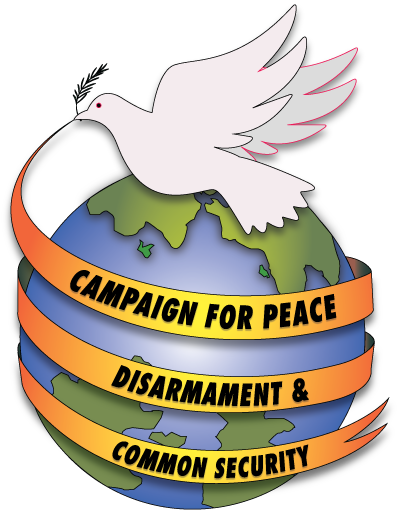Resisting a New Cold War with Russia and China
Joseph Gerson
Reducing the Dangers of New War Conference, Jan 29, 2022
These are not normal times. We are caught in a Thucydides trap, the inevitable tensions between rising and declining powers that leads to catastrophic wars. As before WWI, there are those dangerous tensions, complex alliance structures, intense nationalisms, territorial disputes, arms races with new technologies, international economic integration and competition, autocracies, and wild-card actors.
In Europe we face three crises,: (1) The struggle between western and Russian-oriented Ukrainians over Ukraine’s identity; (2) the Russian-Ukrainian crisis with its deep historic roots; and 3 competing U.S. and Russian efforts to reinforce their power and influence across Europe. NATO, you’ll recall, was created to keep Germany down, the Russians out and the U.S. in.
Speaking about the Ukraine crisis, triggered by U.S. insistence on NATO expansion, Britain’s former top military official warned that if ,” you unleash war in the modern environment, the one thing that is certain is the law of unintended consequences.… then you are living in an environment [where] things could escalate quite quickly, by accident or miscalculation.”
We don’t need to embrace Russia’s traditional authoritarian culture to appreciate how three devastating invasions of Russia from the west – by Napoleon, the Kaiser, and Hitler – that claimed the lives of tens of millions of Russian lives have shaped Russian culture and persistent fears of invasions from the West.
Putin seeks to restore the post-Cold War order of the 1990s, based on the OSCE’s Paris Charter, its European Security Charter, and the 1997 NATO-Russia Founding Act all of which enshrined commitments to equal security and “not to strengthen their security at the expense of the security of other states.” Those commitments were shattered when Presidents Clinton and George W Bush extended NATO, including German and U.S. troops to Russia’s borders.
George Kennan warned at the time that expanding NATO to Russia’s border would trigger a new Cold War. Bush the Lesser compounded what became today’s crisis when he promised NATO membership to Ukraine and Georgia. Fiona Hill warned Bush “that Mr. Putin would view steps to bring Ukraine and Georgia close to NATO was a e provocative move that would most likely provoke pre-emptive Russian military action.” That action came in 2014, when Russian forces seized Crimea, which had been Russia’s warm water port and home to its Black Sea Fleet, since 1774.
President Biden’s and Secretary Blinken’s arrogant insistence on possible future Ukrainian and Georgian NATO membership compounds today’s crisis. France and Germany have blocked their joining the alliance. Were Biden to face reality, he could defuse the tensions by indicating support for a fifteen-year moratorium on new NATO memberships that could be extended.
Despite harsh public rhetoric in conjunction with the recent diplomatic encounters, some progress has been made. ”. All sides’ red lines have been clearly identified, and there is recognition that crisis resolution will require reciprocity on the range of outstanding issues. Ukraine’s foreign minister says that a Russian invasion isn’t imminent, and on Friday Russia’s foreign minister said “There won’t be a war as far as it depends on the Russian Federation, we don’t want a war”.
Former U.S. ambassador James Matlock calls for an obvious solution to the Ukraine crisis: Build on the Minsk II agreement. Negotiate creation of a neutral and federated Ukraine, similar to Austria and Finland. And, like Swiss cantons and Biden’s earlier advocacy of a federated Iraq, a federation would allow for linguistic, religious, cultural, and political autonomy. Ukrainian stability, even democracy.
The need for renewed arms control negotiations has also been recognized, beginning with revival of the INF Treaty and leading to major reductions in their nuclear arsenals. On the table are banning medium range missiles from the Urals to the Atlantic, U.S. first-strike related missile defenses from Europe and U.S. and Russian troops from former Soviet Republics, along with reducing military exercises.
But, incidents, accidents and miscalculations happen, with the danger of a deadly and escalating war.
Midst the European crisis, U.S., and Chinese militaries are eyeball to eyeball in their military confrontations over Taiwan, the South China Sea, and the Senkaku/ Diaoyu islands between Japan and China. Two U.S. aircraft carriers and their warplanes are now engaged in provocative military exercises in the South China Sea.
Trump, Biden, and their mandarins, blinded by self-righteousness and manifest destiny worldviews have forged a toxic national consensus: China poses an existential threat to freedom and democracy. Therefore the U.S. must aggressively oppose it militarily, diplomatically, technologically, and economically. This is about to be codified in Congress by the worst provisions of the U.S. Innovation and Competition Act.
Believing that “China poses the greatest long-term challenge to the U.S.” Congress increased the Pentagon’s budget, including money for the nuclear upgrade and acquisition of more warships, warplanes, space, and high-tech weaponry. Spending for the “Pacific Deterrence Initiative increased by 300%. All this ostensibly to keep ahead of Beijing. Fear that adopting a no first use nuclear doctrine will invite Beijing to invade Taiwan means that Biden’s Nuclear Posture Review will be much like Trump’s Roots of today’s U.S.-China Cold War date to the 1890s when the U.S. created its imperial navy. With that era’s great depression, demands grew for access to foreign markets to keep factories running 24/7, workers employed, and resulting social peace. U.S. leaders thus sought access to the “holy grail of capitalism”: the Chinese market. Coaling stations for merchant and war ships were secured when the U.S. conquered the Philippines, Guam and Samoa and annexed Hawaii. Washington’s 1900 “Open Door” policy won access to Chinese territorial “concessions”. An inconvenient truth is that in Asia and the Pacific, WWII was fought by competing empires. Japan lost. The British empire collapsed. And the Pacific become an American Lake. U.S. Asia-Pacific hegemony went largely unchallenged until China’s rise.
China had no role in negotiating the so-called and abused “rules-based order”. Not surprisingly, to serve its elites’ perceptions of China’s national interests, Beijing has thus sought to revise, if not overturn, rules that it experiences as unfairly
benefitting the G-7. China’s Belt and Road Initiative, its aggressive maritime actions, and its increasing area denial air and cyber capabilities are beginning to call Washington’s dominance of the world’s most economically vital region into question.
Let me make a few last points:
Trump’s and Biden’s National Defense Strategies prioritized planning for possible great power war, with China named as the primary “strategic competitor”. With Biden’s emphasis on alliances, we now have the nuclear U.S., Australian, British AUKUS alliance. NATO’s 2030 doctrine makes China containment one of the alliances two priorities. Next month the foreign ministers of the new U.S., Japan, Australia, India QUAD alliance will again be meeting. And Biden has reaffirmed the U.S. “ironclad” commitments to South Korea, Japan’s Senkaku/Diaoyu Island claims, and military defense of Philippine maritime interests.
Taiwan, which has a pro-independence government and which China calls its renegade province, is the world’s most dangerous flashpoint. Biden and Blinken are playing with fire there by undermining the One China policy that underwrites the 40-year peaceful status quo. This week Vice President Harris met Taiwan’s vice president.. Blinken and Austin trumped Washington’s “rock solid” commitment to Taiwan. The USICA legislation will increase Taiwan’s diplomatic standing in Washington. Add to this Biden has repeatedly dispatched warships and warplanes to the Taiwan Strait, increased arms sales to Taiwan, and confirmed the presence of U.S. troops in Taiwan.
More, in the South China Sea, encircled by hundreds of U.S. military bases and by the 7th Fleet, China has disregarded other nations’ territorial claims and international law by expanding its defense perimeter claiming sovereignty over 80% of the Sea and has constructed military bases on disputed islets there.
More importantly the Sea’s sea lanes carry 40% of world trade, including fossil fuels for China’s, Japan’s and South Korea’s economies. Were the sea lanes blockaded, the region’s economies would crash. The Sea is thus today’s geostrategic center of the struggle for world power. In their threatening shows of force. U.S. and now British, Japanese, French and Dutch, have dangerously increased the pace of so-called “freedom of navigation” naval and air forays near Chinas disputed island bases.
Friends, all of this is madness, As we learned from the 1982 Common Security Report, security cannot be achieved by spiraling arms races and confrontations. It can only be achieved with – not against – a nation’s rival, by creating mutual trust and pursuing mutually beneficial diplomatic outcomes. Our future doesn’t lie in manifest destiny, U.S. exceptionalism, or militarism. It lies in Common Security approaches to the world that can serve as the foundation for a nuclear-free and environmentally sustainable world.
For additional information see:
https://cpdcs.org/historical-background-and-common-security-approaches-to-resolve-the-ukraine-european-crisis/

